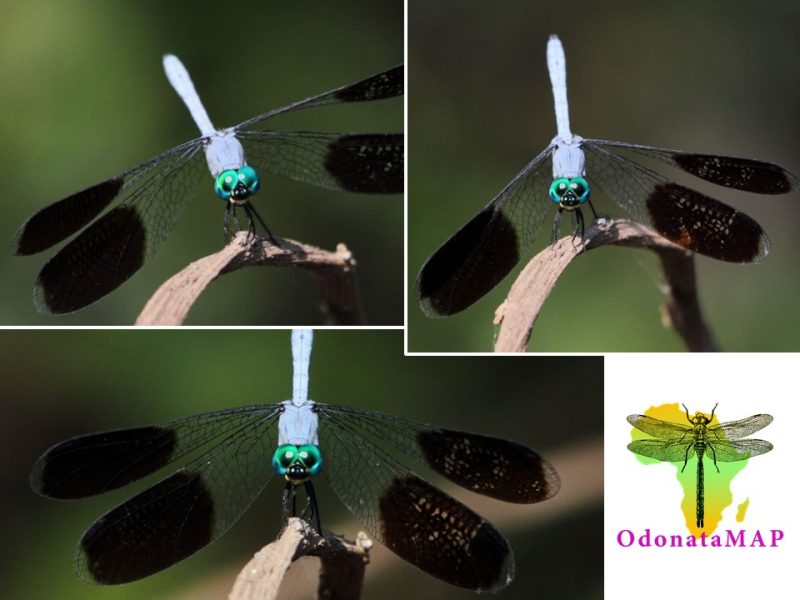Cover photos by Alan Manson.
Find this species in the FBIS database (Freshwater Biodiversity Information System) here.
Family Libellulidae
Identification
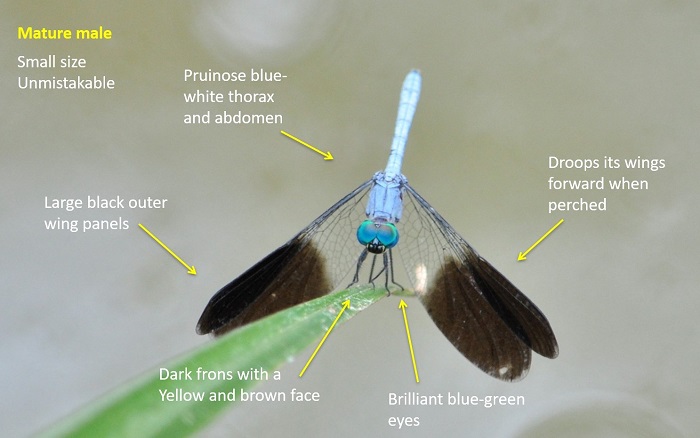
Ndumo Game Reserve, KwaZulu-Natal
Photo by Ryan Tippett
Small size. Length up to 35mm; Wingspan attains 63mm.
The Banded male Black-splashed Elf is striking and distinctive. Unbanded males can be mistaken for skimmers (Orthetrum spp.) or the Inspector (Chalcostephia flavifrons)but can be separated on wing venation and behaviour.
Females are quite similar to those of Notiothemis jonesi (Eastern Forestwatcher). They are best identified by wing venation. Black-splashed Elf females have a four-sided discoidal cell in the forewings, while the fore wings of Notiothemis jonesi have a triangular discoidal cell.
Click here for more details on identification.
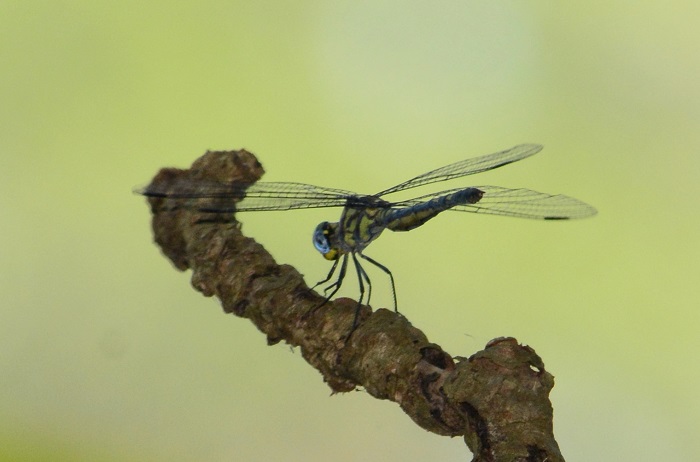
Enseleni Nature Reserve, KwaZulu-Natal
Photo by Ryan Tippett
Habitat
The Black-splashed Elf is a shade-loving species of calm, forested rivers, streams, and pools where trees overhang the water. They inhabit coastal, swamp, and riverine forests, and are sometimes also found in dense woodland along streams. The Black-splashed Elf is found mostly in warmer regions.

Photo by Ryan Tippett
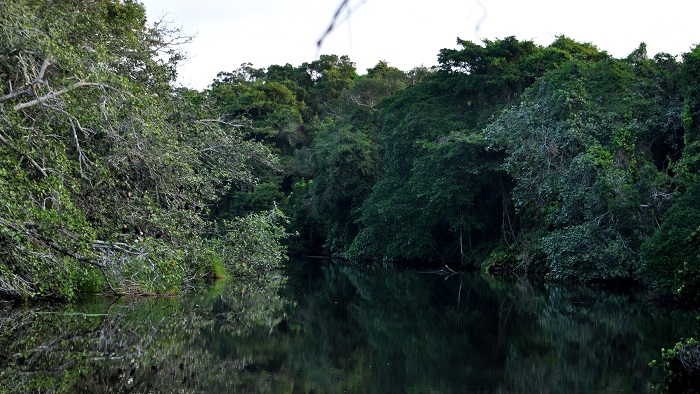
Photo by Ryan Tippett
Behaviour
Male Black-splashed Elfs perch conspicuously on bare, overhanging branches and twigs, usually 1 to 3m above the water. Females are not seen as often and frequently sit higher up and slightly further away from the water. The flight is fast, and the males’ black wing splashes give a fluttering effect. They don’t fly for long and quickly return to their perch. The Black-splashed Elf characteristically sits with the wings drooped forward and the abdomen held up at an angle.
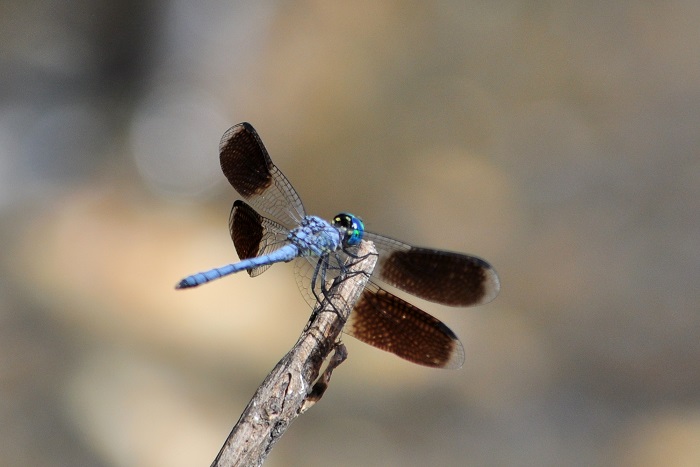
Kuleni Game Park, KwaZulu-Natal
Photo by Ryan Tippett
Status and Conservation
Tetrathemis polleni is a common but localised species. It is listed as of Least Concern in the IUCN Red List of Threatened Species. The Black-splashed Elf is most numerous in undisturbed habitats but can occur at suitable man-made ponds and impoundments. It is moderately sensitive to habitat degradation. This species tolerates some turbid or stagnant water and abandons sites extensively lined with alien trees. The Black-splashed Elf is sensitive to the deforestation of overhanging indigenous trees, resulting in a loss of shady habitat.
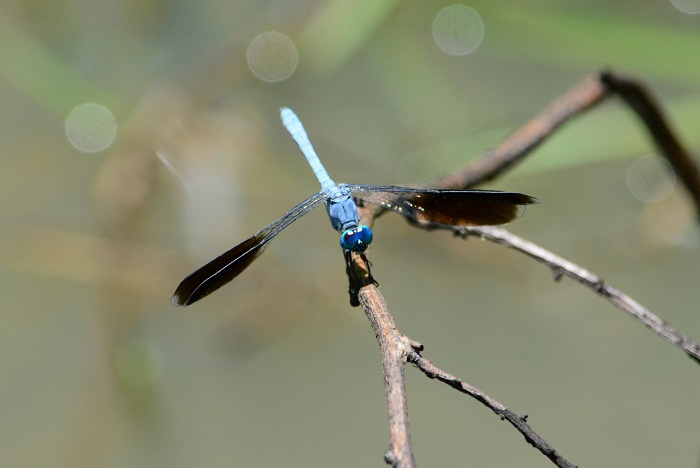
Enseleni Nature Reserve, KwaZulu-Natal
Photo by Ryan Tippett
Distribution
The Black-splashed Elf is most widespread in the Eastern parts of Africa, from South Africa to Uganda, Somalia, and Ethiopia. There is also a population in West Africa ranging from Nigeria to Guinea.
In South Africa, the Black-splashed Elf is found in the north and east, extending down the east coast as far as George, Western Cape.
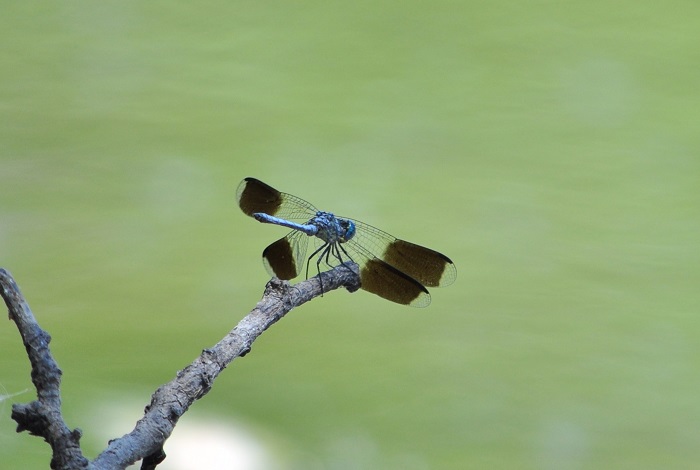
Kuleni Game Park, KwaZulu-Natal
Photo by Ryan Tippett
Below is a map showing the distribution of records for Black-splashed Elf in the OdonataMAP database as at February 2020.
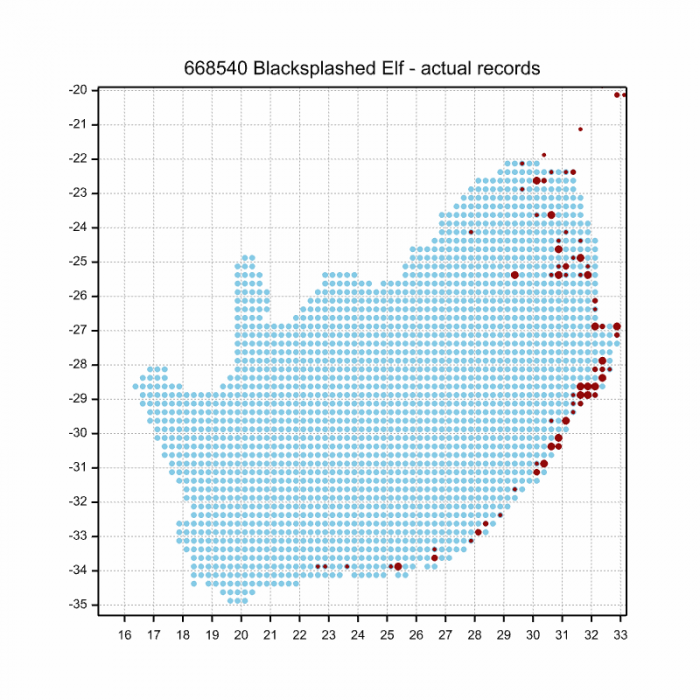
Below is a map showing the distribution of records for Black-splashed Elf in the OdonataMAP database as of December 2025.
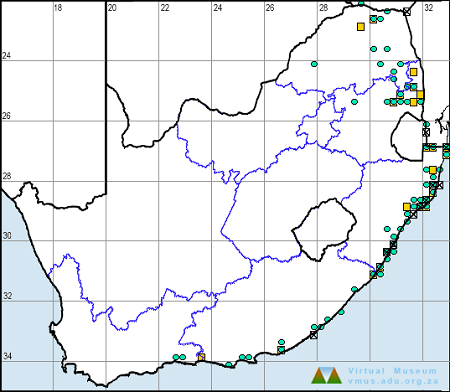
The next map below is an imputed map, produced by an interpolation algorithm, which attempts to generate a full distribution map from the partial information in the map above. This map will be improved by the submission of records to the OdonataMAP section of the Virtual Museum.
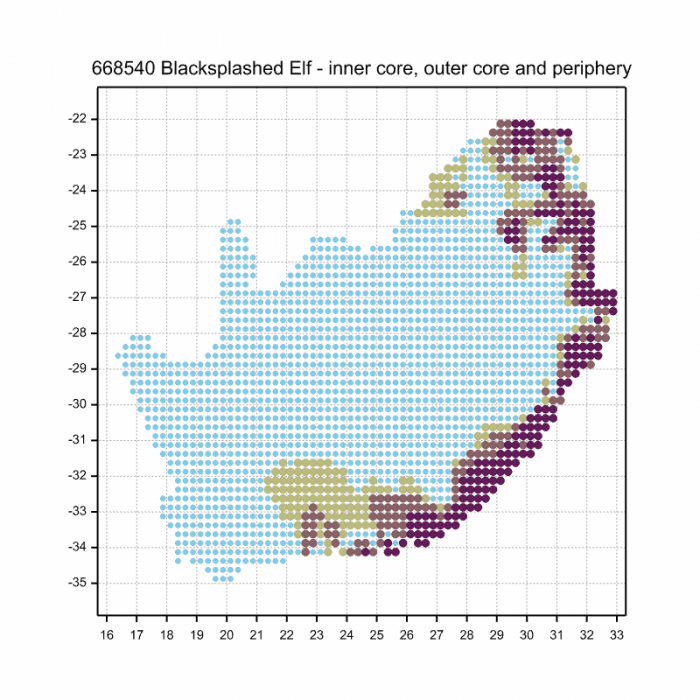
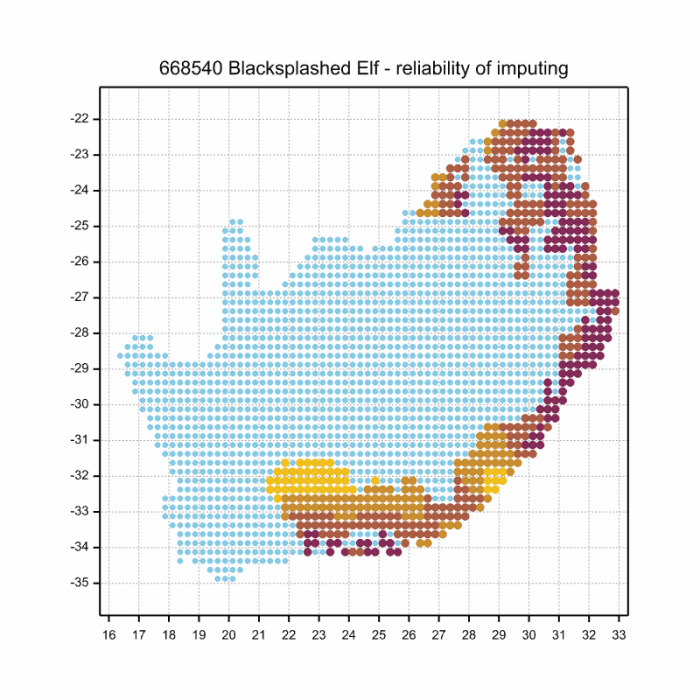
Ultimately, we will produce a series of maps for all the odonata species in the region. The current algorithm is a new algorithm. The objective is mainly to produce “smoothed” maps that could go into a field guide for odonata. This basic version of the algorithm (as mapped above) does not make use of “explanatory variables” (e.g. altitude, terrain roughness, presence of freshwater — we will be producing maps that take these variables into account soon). Currently, it only makes use of the OdonataMAP records for the species being mapped, as well as all the other records of all other species. The basic maps are “optimistic” and will generally show ranges to be larger than what they probably are.
These maps use the data in the OdonataMAP section of the Virtual Museum, and also the database assembled by the previous JRS funded project, which was led by Professor Michael Samways and Dr KD Dijkstra.
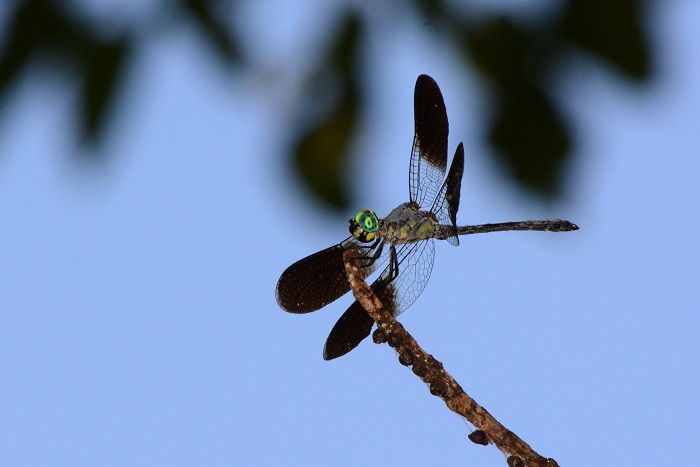
False Bay, iSimangaliso Wetland Park, KwaZulu-Natal
Photo by Ryan Tippett
Further Resources
The use of photographs by Alan Manson is acknowledged.
Black-splashed Elf Tetrathemis polleni (Selys, 1869)
Other common names: Swartspikkeldwergie (Afrikaans)
Recommended citation format: Loftie-Eaton M; Navarro R; Tippett RM; Underhill L. 2025. Black-splashed Elf Tetrathemis polleni. Biodiversity and Development Institute. Available online at https://thebdi.org/2020/02/26/black-splashed-elf-tetrathemis-polleni/
References: Tarboton, M; Tarboton, W. (2019). A Guide to the Dragonflies & Damselflies of South Africa. Struik Nature.
Samways, MJ. (2008). Dragonflies and Damselflies of South Africa. Pensoft
Samways, MJ. (2016). Manual of Freshwater Assessment for South Africa: Dragonfly Biotic Index. Suricata 2. South African National Biodiversity Institute, Pretoria
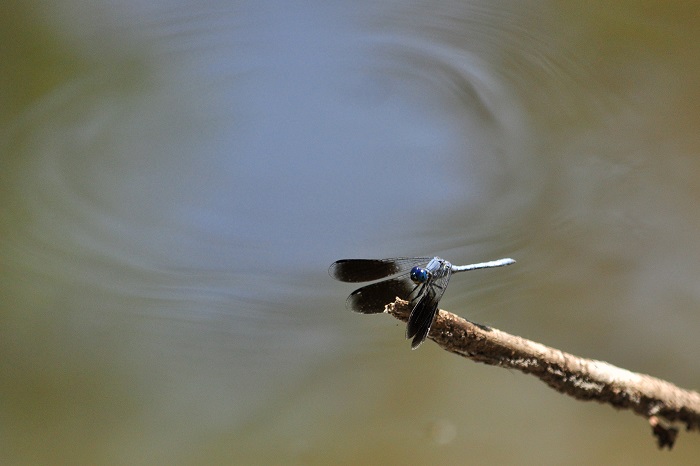
Ndumo Game Reserve, KwaZulu-Natal
Photo by Ryan Tippett

